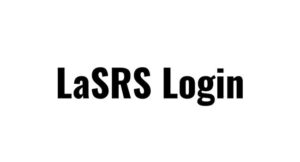As an in-home care provider utilizing Louisiana’s LaSRS portal, you likely find the system invaluable for verifying visits, tracking authorizations, submitting notes and timesheets, and more. But what happens when you need to pull that data out of LaSRS databases for review, analysis, claims, audits, or other needs? This is where essential export and import functionalities come in. Let’s discuss approaches for moving LaSRS data in and out of the system.

Exporting Data from LaSRS
Exporting allows providers to pull centralized participant, visit, authorization, and other records from LaSRS for use in external formats like Excel spreadsheets. Common scenarios requiring data exports include:
- Generating reports, graphics, and infographics summarizing service trends
- Conducting participant care or operational analytics in other platforms
- Reviewing full documentation records for internal audits
- Formatting and packaging details to include with claims
- Compiling multi-participant data sets for authorizing agencies
LaSRS offers user-friendly export wizards for identifying what module data you need and configuring file formats, detail levels, date ranges, and other parameters. Static data exports containing set details or dynamic query-based exports can be configured. Most exports compile into Excel compatible .XLS/.XLSX files downloadable from the portal to then manipulate externally as needed.
Importing Data to LaSRS
While exporting moves internal LaSRS records outbound, providers can also import external data back into the system. This facilitates tasks like:
- Uploading visit and payroll timesheets in batch
- Refreshing outdated participant demographic data
- Maintaining authorization details en masse as assigned by oversight agencies
- Quickly updating clinical assessment scoring across multiple patients
- Adding multiple new participants and baseline care plans from referrals
Look for import and upload type features within the LaSRS modules matching incoming datasets. Formats like Excel along with options for merging new data with or overwriting existing data help enable seamless integration.

Best Practices for Moving Data
Follow these tips when transferring information out of and back into LaSRS:
- Use clear descriptive naming conventions on exported/imported files
- Check dataset completeness and formatting requirements before importing
- Configure exports to only pull essential baseline variables
- Review a test import batch before applying changes en masse
- Back up existing data within LaSRS before overwriting via imports
- Ensure Protected Health Information stays confidential throughout
Conclusion
While LaSRS strives to centralize all participant and care data digitally for providers, getting that information back out of the closed system remains vital for supplemental reporting, analytics, claims processing, and auditing.
Similarly, importing external spreadsheets and databases fuels efficiency. Familiarizing yourself with built-in export configuration wizards and bulk upload functionalities eliminates hassle when moving relevant data subsets in or out of the portal. Reach out to LaSRS administrators if any questions arise when attempting to format, extract, or integrate essential program records.
